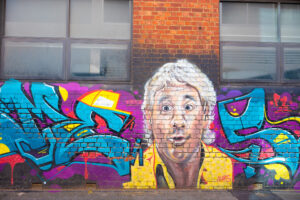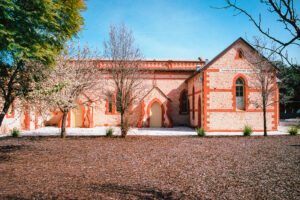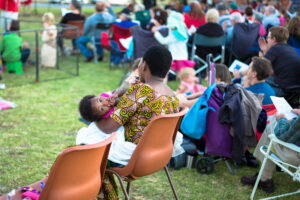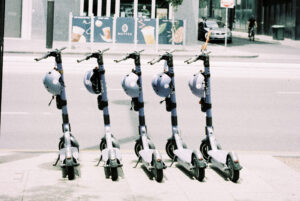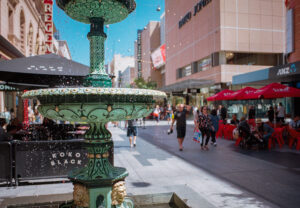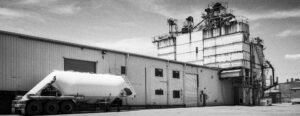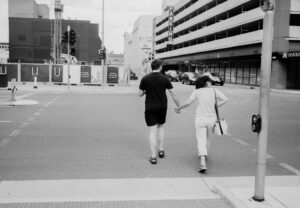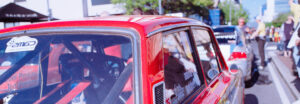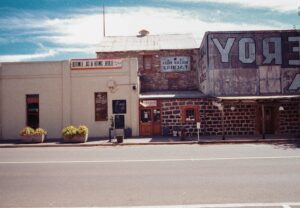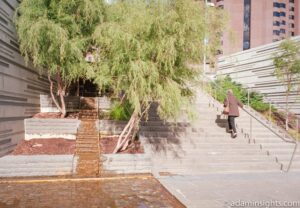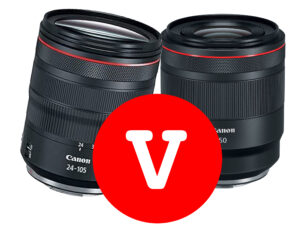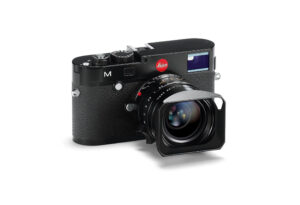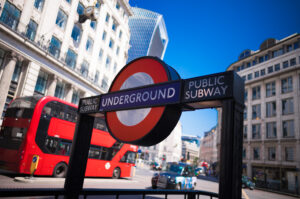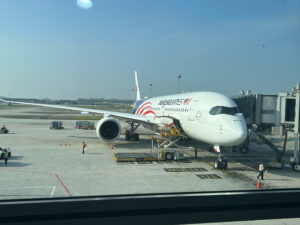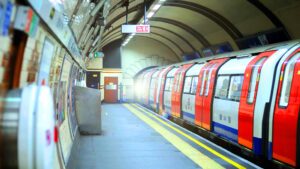In today’s world of aerial photography, drones and helicopters dominate the skies. They capture stunning vistas and provide perspectives that were once unimaginable. However, before the era of modern drone photography, a man named George Lawrence revolutionized the field with his innovative use of kites. Known as the father of aerial photography, George R. Lawrence’s contributions to the field are immense, and his pioneering spirit laid the groundwork for today’s aerial photography enthusiasts.
George Lawrence: The Father of Aerial Photography
George R. Lawrence was not just a photographer; he was an innovator, a tinkerer, and a visionary. Born in 1868, Lawrence’s passion for photography and engineering led him to explore uncharted territories in the realm of capturing images from the sky. While today’s drone photographers have sophisticated equipment at their disposal, Lawrence’s tools were rudimentary yet groundbreaking for his time.
The most notable example of Lawrence’s innovation came after the devastating San Francisco earthquake of April 18, 1906. The earthquake, which lasted a mere 42 seconds, left the city in ruins. Fires that raged for days compounded the destruction, leaving 80% of the city devastated and more than 3,000 people dead. Amidst this chaos, George Lawrence saw an opportunity to document the scale of the disaster from a perspective never seen before.
Epic Aerial Photography Triumph: Capturing San Francisco from the Sky in 1906
George Lawrence’s San Francisco photo project, undertaken after the 1906 earthquake, was a groundbreaking endeavor in aerial photography. Using a complex rig of Conyne kites and a 50-pound panoramic camera, Lawrence captured a stunning 160-degree view of the devastated city from 2,000 feet above. The camera, stabilized by booms, lead weights, and silk cords, was triggered via an insulated wire that sent an electrical current from the ground to trip the shutter. His iconic photograph, “San Francisco in Ruins,” became an invaluable historical document and a commercial triumph, with global sales of prints generating approximately $15,000 (around $440,000 today). This success underscored the commercial potential of aerial photography and established Lawrence as a pioneer in the field.
Using a complex rig of kites and weights, Lawrence managed to fly a 50-pound camera approximately 2,000 feet above the San Francisco waterfront. The camera, suspended beneath a train of Conyne kites, was stabilized using a sophisticated system of booms, lead weights, and silk cords. This setup minimized the camera’s movement, allowing for clear, sharp images despite the windy conditions.

A panoramic camera with its aluminum back removed reveals the interior mechanics. When loaded, the film plane curves to match the shape of the back. The focal plane shutter, designed as a flattened cone, is directly mounted to the back of the lens and rotates with it. As the image reaches the film, it passes through a slit in the cone. The film portion aligned with the wider part of the slit receives a longer exposure compared to the section aligned with the narrower part.


To capture the image, Lawrence ingeniously used an insulated wire running along the kite line to send an electrical current from the ground to trip the shutter. The resulting photograph, titled “San Francisco in Ruins,” provided a breathtaking 160-degree panoramic view of the devastated city. This image, seared onto a massive 4-foot wide plate, became an iconic representation of the disaster and an invaluable historical document.
A train of nine Conyne kites is sent aloft to lift a camera, which hangs suspended below the bottom kite. Each kite is connected to the main line with its own short line, kept from entangling by a light bamboo rod. Together, the kite train and the camera-stabilizing mechanism form what Lawrence called his “Captive Airship.” Three evenly spaced 15-foot-long booms extend from the cradle holding the camera. Each boom has a lead weight at its tip and a 120-foot-long silk cord attached. The other ends of these cords are tied together directly below the camera, with a three-pound lead weight at that junction (not visible in this view). In this instance, a flat plate camera is being used rather than a panoramic camera.
The Legacy of George Lawrence’s Panoramic Photography
Lawrence’s panoramas of San Francisco were not just technically impressive; they were also commercially successful. People around the world purchased prints of the waterfront panorama for $125 each, generating roughly $15,000 in sales—equivalent to about $440,000 today. This financial success vindicated Lawrence’s belief in the commercial potential of aerial photography, a concept that would fully blossom in the drone era.

Beyond the San Francisco panoramas, Lawrence’s work spanned various subjects. His portfolio included photographs of large banquet groups, state legislatures, industrial plants, and major events like the Republican National Conventions of 1904 and 1908. Many of these images were captured using oversized negatives, resulting in remarkable clarity and detail. Lawrence’s ability to elevate his cameras using ladders, portable towers, and eventually kites showcased his relentless pursuit of new perspectives.
The Innovation Behind Kite Photography
Lawrence’s journey into kite photography began after a near-fatal accident involving a hydrogen balloon. Seeking a safer method to elevate his cameras, he turned to the Conyne kite, invented by Silas J. Conyne. Lawrence acquired the rights to build these kites and spent years perfecting his technique.
By attaching multiple kites in a train and using bamboo spreaders to prevent tangling, Lawrence could lift his large panoramic cameras to heights of up to 2,000 feet. His innovative system of weights and booms kept the camera steady, allowing for long exposures that captured incredible detail.
To trip the shutter, Lawrence incorporated an insulated wire into the kite line, sending an electric current from the ground to the camera. This setup enabled him to take sharp, clear photographs from high altitudes, a feat that was unmatched at the time.

A diagrammatic representation of the “Captive Airship” being flown from a ship illustrates its various components. The spreader rod (s) keeps the kite clear of the main line, while long booms (g) extend 15 feet out from the base of the camera cradle, each ending with small lead weights (h) of several ounces. The setup also includes 120-foot long silk cords (i) and a three-pound lead weight (j). A line and pulley system (o and p) prevents the weight from dragging in the water during launch and retrieval, with a winch (r) used for control. The inset shows the steadying mechanism’s two-point attachment to the kite line at points (a) and (f), allowing the camera to be adjusted at points (b, c, d, and e) before being sent aloft. A flat plate camera (k) is mounted in the cradle, with the camera shutter (m) operated by electromagnets receiving current through a wire (n) connected to the main piano-wire kite line, which includes an insulated copper wire. A ground battery provides the necessary current to operate the shutter. This mechanism, comprising the 15-foot booms (g), lead weights (h), silk cords (i), and three-pound lead weight (j), prevents the camera from turning and swinging like a pendulum despite the movement of the kites.
George Lawrence: A Visionary Ahead of His Time
George R. Lawrence’s contributions to aerial photography were characterized by his imagination and inventiveness. He took existing technologies and combined them in new ways to achieve unprecedented results. While he kept many of his techniques secret, the legacy of his work is evident in the clarity and scale of his photographs.
Lawrence’s pioneering spirit and innovative approach laid the foundation for modern aerial photography. Today’s drone photographers owe a debt of gratitude to Lawrence, whose early experiments with kite photography opened the skies to new possibilities. His work remains a testament to the power of innovation and the enduring human desire to capture the world from above.
The Enduring Impact of George Lawrence’s Aerial Photography
George Lawrence’s aerial photographs continue to inspire and inform. His images of San Francisco after the 1906 earthquake are not just historical records; they are works of art that capture the scale and impact of the disaster. They remind us of the resilience of a city and the power of photography to document and preserve history.
For today’s drone photographers, Lawrence’s story is a reminder of the importance of creativity and innovation. While the tools have changed, the drive to explore new perspectives and capture stunning images remains the same. George R. Lawrence, with his kites, weights, and pioneering spirit, was truly ahead of his time. His legacy lives on in the skies, carried forward by every aerial photographer who looks down and captures the world below.
In conclusion, the next time you see a breathtaking aerial photograph taken by a drone, remember George Lawrence. Remember the man who, long before drones and helicopters, used kites and ingenuity to bring the beauty and devastation of the world into focus from above. His work paved the way for the incredible advancements in aerial photography that we enjoy today, and for that, we owe him our gratitude.
Who was George Lawrence?
George Lawrence was a pioneering American photographer known for his groundbreaking work in early photography and aerial imaging. Born on February 24, 1868, in Ottawa, Illinois, Lawrence was the eldest of six children to Margaret Othelia Tritley and Michael B. Lawrence. His father, Michael, balanced his time between farming and carpentry in LaSalle County before relocating the family to a farm in Kankakee County, about sixty miles east.
George Lawrence received his education up to the eighth grade in the nearby town of Manteno, Illinois, and attended St. Joseph’s Roman Catholic Church in Manteno. His formative years on the farm and in a rural community did not hint at his future as an innovative photographer.
In the mid-1890s, Lawrence made significant strides in photography by perfecting “flashlight photography,” a precursor to the flashbulbs that would later become standard. However, his most notable achievement came in 1900 when he constructed the world’s largest camera to photograph the Alton Limited Train, owned by the Chicago & Alton Railway. This mammoth camera weighed an astonishing 1400 pounds (640 kg) and utilized a 4.5′ × 8′ glass-plate negative. The resulting photograph, taken for the 1900 Exposition Universelle (Paris Exposition of 1900) in Paris, France, earned him “The Grand Prize of the World.”
Beyond his work with large-format cameras, Lawrence also pioneered aerial photography. He employed innovative techniques such as using balloons and camera-carrying kites to capture images from above, long before the advent of modern aerial photography and drone technology. His contributions significantly influenced the development of photographic techniques and equipment, leaving a lasting legacy in the field.
George Lawrence’s life was a testament to ingenuity and the relentless pursuit of innovation in photography. His work not only captured the marvels of his time but also laid the groundwork for future advancements in the art and science of photography.



